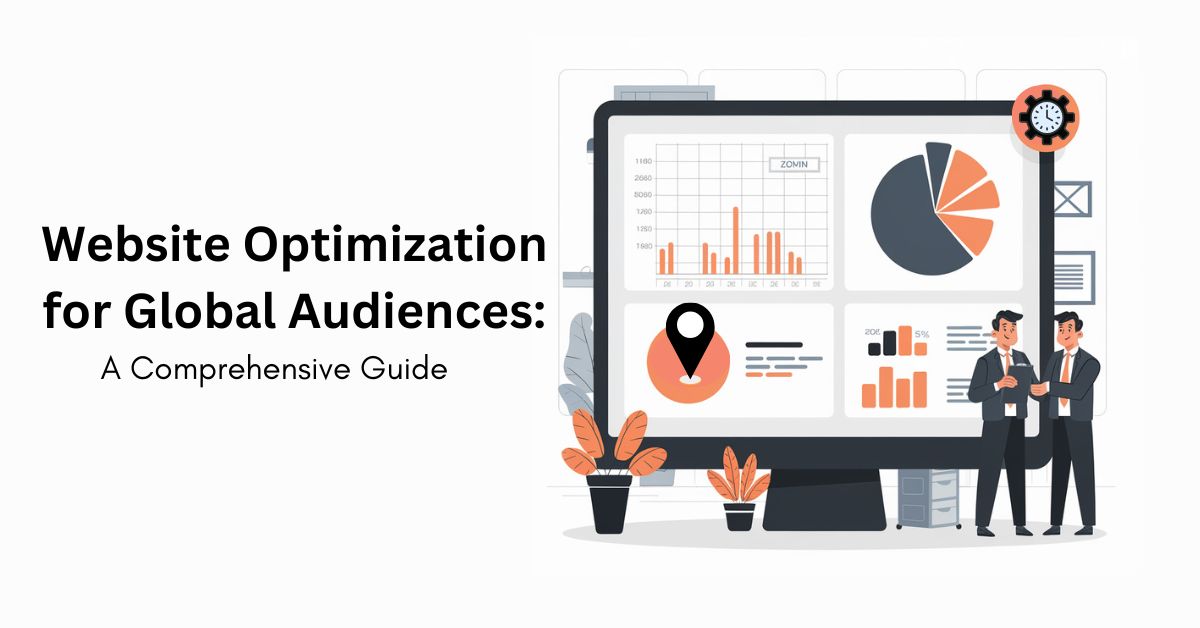Website Optimization for Global Audiences: A Comprehensive Guide
In today’s interconnected world, website optimization for global audiences is more than just a trend—it’s a necessity. As businesses expand their reach beyond borders, they face the challenge of ensuring their digital presence resonates with diverse audiences. This involves a meticulous approach to adapting website content, design, and functionality to cater to different cultural, linguistic, and technical nuances. In this guide, we’ll explore strategic measures for website optimization for global audiences, enabling you to enhance user experience and realize your website’s full international potential.
Understanding Global Optimization
Global optimization is a strategic approach aimed at making a website accessible, user-friendly, and relevant across various international markets. It’s more than just translating content; it’s about creating a seamless experience that caters to different languages, cultures, and regional preferences. By adopting a global optimization strategy, businesses can significantly improve their market reach and effectiveness on an international scale.
- Increased international reach
- Enhanced user engagement from diverse audiences
- Improved brand credibility and trust across regions
Key Elements of Website Optimization for Global Audiences
Language and Localization
One of the foundational steps in website optimization for global audiences is implementing multi-language support. This involves localizing content to cater not only to the language spoken but also to cultural nuances. Utilizing the language tag, such as <html lang="en">, indicates the language of your website’s content to search engines, improving visibility in regional searches.
International SEO Techniques
For successful website optimization for global audiences, implementing international SEO techniques is crucial. Implementing hreflang tags helps search engines understand which language you are using on a specific page, ensuring users are directed to the correct language version of your website. Additionally, acquiring local backlinks enhances credibility and relevance in international markets. An example code for hreflang implementation is:
<link rel="alternate" href="http://example.com/lang-en/page" hreflang="en-us" />
Cultural Considerations
Cultural relevance is critical in both content and design to facilitate a deeper connection with audience segments. This involves using culturally appropriate imagery, symbols, and design elements that resonate with local customs and values. Tailoring user experience (UX) design to fit cultural contexts can greatly enhance engagement and conversion rates.
Technical Aspects of Global Optimization
Site Speed and Performance
For website optimization for global audiences, site speed and performance are paramount. A fast-loading website ensures that users from all over the world experience minimal downtime and quick access to content. Implementing responsive images using the <img srcset="..."> tag allows for optimal loading times, as it serves different image sizes based on the user’s device and connection speed.
Mobile Optimization
With the increasing use of mobile devices, ensuring mobile optimization is essential. Responsive web design is crucial, as it allows your website to adapt to various screen sizes and devices, providing a consistent user experience globally. Aspects like touch-friendly navigation can greatly improve the mobile user experience.
Measuring Success and Continuous Improvement
To gauge the effectiveness of your website optimization efforts, it is important to track specific analytics. Monitor metrics such as international traffic, bounce rates, and conversion rates in different regions. Regularly seeking user feedback and conducting usability tests can provide insights for continuous improvements, ensuring your website remains relevant and effective across diverse audiences.
Conclusion
In conclusion, website optimization for global audiences is an essential strategy for businesses aiming to expand their international presence and effectiveness. By focusing on language and localization, cultural considerations, international SEO techniques, and technical improvements like site speed and mobile optimization, you can ensure your website meets the needs of a diverse global audience. Begin your optimization journey today and unlock the full potential of your international online presence.
For further reading, ensure your SEO practices include smart keyword usage, effective internal and external linking, and image optimization with <alt> tags. Properly structured HTML, utilizing semantic tags such as <article> and <section>, can enhance accessibility, readability, and search engine ranking.
Incorporate these strategies into your SEO practices and optimize your website to connect with audiences around the globe effectively. By adopting these techniques, your website will not only attract international visitors but also provide them with a seamless and engaging experience.







